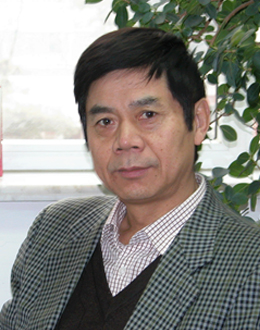THE 4TH INTERNATIONAL
SYMPOSIUM ON THERMAL-FLUID DYNAMICS
(ISTFD 2023)

THE 4TH INTERNATIONAL
SYMPOSIUM ON THERMAL-FLUID DYNAMICS
(ISTFD 2023)

Prof. Zonglin Jiang
Institute of Mechanics, Chinese Academy of Sciences, Beijing 100190, China
zljiang@imech.ac.cn
Zonglin Jiang is a professor of the Institute of Mechanics, Chinese Academy of Sciences, a Distinguished Fellow of the International Shock Wave Institute, a Member of Russian Academy of Natural Sciences, an Associate Fellow of American Institute of Aeronautics and Astronautics (AIAA). Zonglin Jiang graduated from the Department of Mechanics, Peking University with a Ph.D. degree and has engaged in gas dynamics research since then. His original and significant achievements include the universal framework of detonation initiation and propagation, the theory and technology for detonation-driven hypersonic shock tunnels, the theory for standing oblique detonation ramjet engine, and the dispersion control dissipative shock-capturing scheme. Zonglin Jiang has won the AIAA 2016 Ground Test Award, National Invention Prize of China, Outstanding Science and Technology Achievement Prize of the Chinese Academy of Sciences, and the China Mechanics Science and Technology Progress Award. He has co-authored over 300 refereed papers and published 3 academic monographs, including “Gaseous Detonation Physics and Its Universal Framework Theory” by Springer and “Theories and Technologies of Hypersonic Shock Tunnels” by Cambridge University Press.
Title: Critical Condition for Standing Oblique Detonation Ramjet Engines
Abstract: Advanced engine is a core technology of aviation industries and air-breathing hypersonic engine has been a top problem of aerospace technology for decades. In the presentation, the critical condition for the standing oblique detonation ramjet (sodramjet) engine is investigated with theoretical analysis and experimental verification. The first criterion of the critical condition is obtained from the steady one-dimensional flow with heat addition and named as the maximum heat that can be used to determine local flow states (subsonic or supersonic) of combustion products in chemically-reacting supersonic flows. By following after detonation theory, the second criterion defines a critical Mach number for the hypersonic ramjet propulsion to meet a stable operation requirement at full equivalent ratio. The last presents a critical wedge angle for a ramjet combustor, at which an oblique shock thus-induced is just strong enough to trigger an oblique detonation. A sodramjet engine mode was designed according to the critical condition and then tested successfully with the JF-12 shock tunnel. From experimental data, the standing oblique detonation in the combustor was observed to maintain a stable state and the sodramjet engine mode was operated stably for as long as 50 ms. The critical condition presents a balance point between the total chemical reaction heat and the inflow dynamic energy, at which stable engine operation of hypersonic ramjet propulsion can be maintained. More details will be discussed in the presentation.